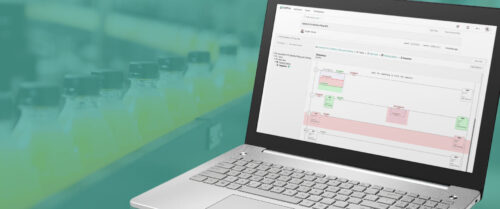How may I help you?
How many times have you felt like answering or have actually answered your work phone with the phrase, "Hello, how may I help you?" If you design and implement systems, you may be surprised at the amount of time spent on service and support. The typical IT department spends more than 75% of its budget on service.
How many times have you felt like answering or have actually answered your work phone with the phrase, “Hello, how may I help you?” If you design and implement systems, you may be surprised at the amount of time spent on service and support. The typical IT department spends more than 75% of its budget on service. Control departments may spend an even larger percentage of their time on support of existing systems. The typical control department will support PLC programs, SCADA configurations, HMI displays and reports, MES software, PC-based software, and a range of special applications and hardware systems. Control personnel may also have to support the application computers, file servers, print servers, their operating systems, attached fieldbuses and industrial networks, network routers and switches, bar-code scanners, printers, and virus protection software, and perhaps even manage accounts and passwords for operators and embedded software.
IT departments that support financial, communications, and other vital services have developed “best practices” for handling service and support in a consistent manner. Control departments can learn from IT experiences. IT departments are increasingly implementing a best practice model developed by the UK government’s Central Computer and Telecommunication Agency. Called ITIL, the Information Technology Infrastructure Library is described in a set of seven books controlled by the UK Office of Government Commerce. ITIL complies with the requirements for ISA 9001 quality standards and is referenced by ISA 9000 for IT standards. ITIL models define a comprehensive process-based framework for IT service management. They contain a set of best practice guidelines for service support, service delivery, application management, infrastructure management, implementing service management in an organization, determining the business value of service, and implementing security requirements.
Service management and service delivery have sub-areas. Service management includes: configuration management of assets and their interrelationships, incident management and processes for getting service restored, problem management and process for determining root causes of problems and correcting them, change management and processes for ensuring that all changes to managed elements are carried out in a planned and authorized manner, release management and processes for managing updates to hardware and software, and service desk functions and processes that describe how to manage service requests. Service delivery includes: dealing with end-user (customer) needs, ensuring high service availability, managing capacity to maintain performance, financial management for service costs, continuity management in the case of natural or man-made disasters, and organizing and maintaining the management of IT security.
Control departments also handle many of these processes, but they are often handled in an ad-hoc or non-systematic method. ITIL provides a solid framework for identifying processes that should be in place for managing changes and problems in a computer-heavy control environment. ITIL defines what must be done for effective service, but not how to do it.
ITIL toolkit and books are available online at www.itil.co.uk . The most valuable books for control departments will be those on service support, service delivery, and security management. Control department managers may also find value in the business perspective and implementation planning books.
ITIL complements other methodologies, such as the CMMI model (addressed in my previous two columns), as it addresses what happens during and after installation of the developed software. Six-sigma and other improvement methodologies provide guidance in how to measure and improve software development and service delivery.
Control departments should look at ITIL when designing their support service processes, because the best practices in IT departments can be effectively applied to IT-intensive control systems.
Author Information
Dennis Brandl, dbrandl@brlconsulting.com , is the president of BR&L Consulting, a consulting firm focusing on manufacturing IT solutions, based in Cary, NC.
Do you have experience and expertise with the topics mentioned in this content? You should consider contributing to our CFE Media editorial team and getting the recognition you and your company deserve. Click here to start this process.





